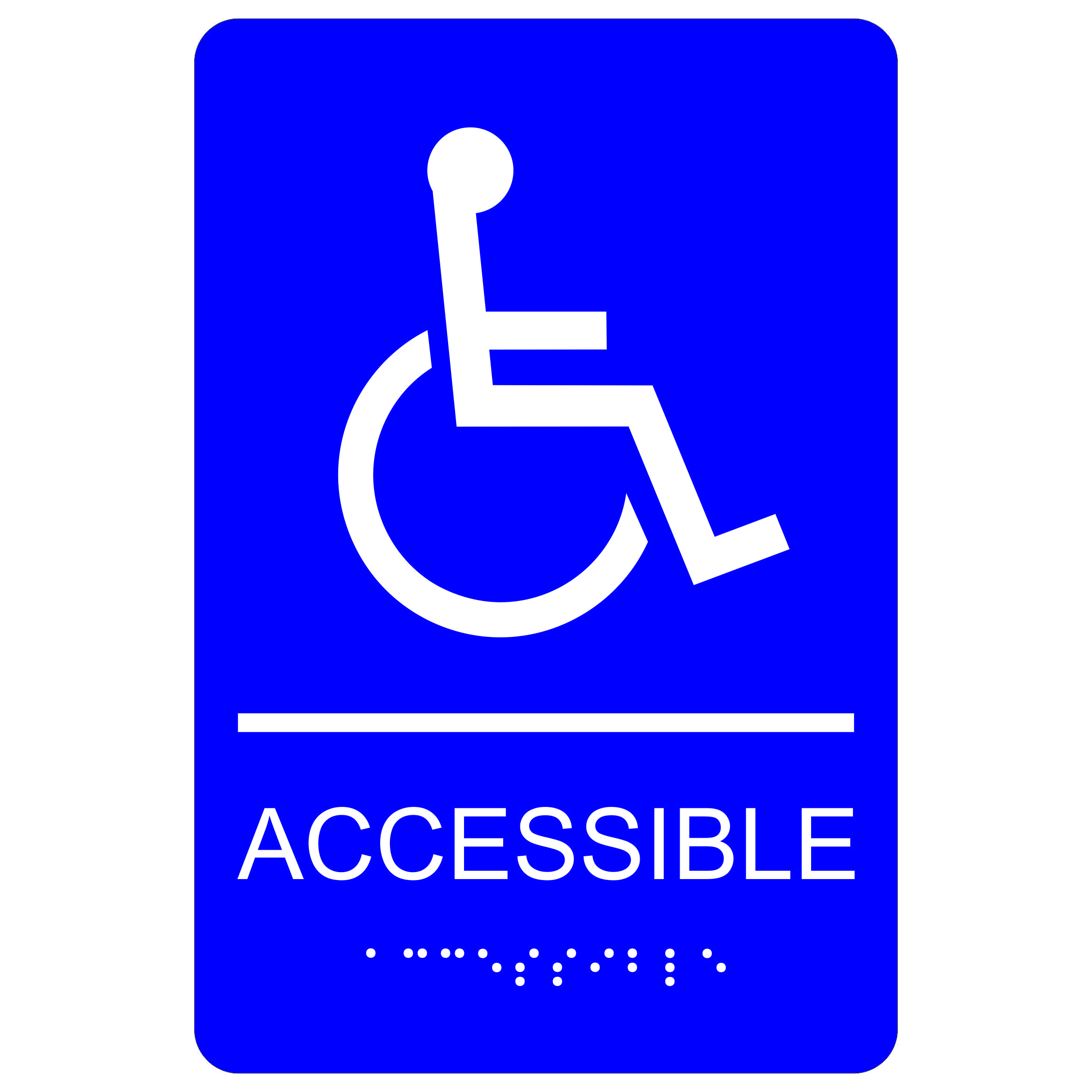Discover the Importance of ADA Signs in Public Spaces
Discover the Importance of ADA Signs in Public Spaces
Blog Article
Checking Out the Secret Features of ADA Signs for Enhanced Accessibility
In the world of ease of access, ADA indicators serve as quiet yet powerful allies, making sure that spaces are inclusive and accessible for individuals with specials needs. By incorporating Braille and tactile components, these signs damage barriers for the visually damaged, while high-contrast color plans and legible fonts cater to varied aesthetic requirements.
Value of ADA Compliance
Making sure conformity with the Americans with Disabilities Act (ADA) is crucial for fostering inclusivity and equivalent access in public areas and workplaces. The ADA, enacted in 1990, mandates that all public centers, companies, and transportation solutions suit individuals with specials needs, guaranteeing they delight in the exact same civil liberties and opportunities as others. Conformity with ADA standards not only satisfies lawful commitments but likewise improves a company's online reputation by demonstrating its commitment to diversity and inclusivity.
Among the essential elements of ADA conformity is the implementation of easily accessible signage. ADA signs are created to make certain that individuals with disabilities can easily browse through rooms and buildings. These signs have to abide by certain standards relating to dimension, font style, color contrast, and placement to assure presence and readability for all. Properly implemented ADA signage aids remove barriers that people with disabilities frequently experience, thus promoting their freedom and self-confidence (ADA Signs).
In addition, sticking to ADA policies can reduce the risk of possible fines and lawful consequences. Organizations that stop working to abide by ADA standards may encounter suits or penalties, which can be both monetarily difficult and damaging to their public image. Hence, ADA compliance is indispensable to promoting an equitable atmosphere for everyone.
Braille and Tactile Aspects
The consolidation of Braille and responsive elements into ADA signage symbolizes the concepts of accessibility and inclusivity. It is normally put under the corresponding text on signage to make sure that people can access the details without aesthetic assistance.
Responsive components expand past Braille and consist of increased signs and personalities. These elements are developed to be discernible by touch, allowing individuals to recognize area numbers, toilets, leaves, and various other vital areas. The ADA sets specific standards pertaining to the dimension, spacing, and positioning of these tactile elements to optimize readability and make certain consistency across various environments.

High-Contrast Color Design
High-contrast shade schemes play a crucial function in enhancing the presence and readability of ADA signage for individuals with aesthetic disabilities. These systems are necessary as they make best use of the distinction in light reflectance between message and background, making certain that indicators are quickly discernible, also from a range. The Americans with Disabilities Act (ADA) mandates making use of details shade contrasts to suit those with limited vision, making it a vital aspect of conformity.
The efficacy of high-contrast colors hinges on their ability to attract attention in various lights conditions, consisting of poorly lit environments and locations with glow. Usually, dark message on a light background or light text on a dark history is employed to accomplish optimum contrast. For example, black message on a yellow or white background supplies a raw aesthetic distinction that aids in fast acknowledgment and comprehension.

Legible Fonts and Text Dimension
When considering the style of ADA signage, the option of understandable fonts and suitable message dimension can not be overemphasized. These components are essential for making sure that indicators are accessible to individuals with visual disabilities. The Americans with Disabilities Act (ADA) mandates that typefaces have to be sans-serif and not italic, oblique, script, highly decorative, or of uncommon kind. These needs aid make certain that the message is conveniently legible from a range which the characters are appreciable to diverse audiences.
According to ADA guidelines, the minimum message height should be 5/8 see here inch, and it needs to boost proportionally with checking out distance. Uniformity in text dimension contributes to a natural visual experience, aiding individuals in browsing environments successfully.
Moreover, spacing between letters and lines is integral to legibility. Adequate spacing prevents personalities from appearing crowded, boosting readability. By adhering to these criteria, designers can considerably boost availability, guaranteeing that signage offers its intended function for all people, no matter their aesthetic capacities.
Effective Positioning Strategies
Strategic placement of ADA signage is essential for making best use of access and making certain conformity with legal criteria. ADA standards stipulate that signs should be installed at an elevation between 48 to 60 inches from the ground to ensure they are within the line of view for both standing and seated individuals.
Additionally, signs have to be placed beside the latch side of doors to allow very easy identification before entrance. This positioning helps people situate areas and spaces without obstruction. In situations where there is no door, indications must be situated on the nearby surrounding wall. Uniformity in indicator placement throughout a facility boosts predictability, lowering confusion and improving overall user experience.

Verdict
ADA indicators play an essential duty in advertising availability by integrating functions that attend to the demands of people with impairments. These components collectively promote a comprehensive environment, highlighting the importance of ADA compliance in guaranteeing equal gain access to for all.
In the world of ease of access, ADA signs serve as silent yet powerful allies, making sure that rooms are comprehensive and accessible for individuals with handicaps. The ADA, established in 1990, mandates that all public facilities, employers, and transport services accommodate individuals with impairments, guaranteeing they appreciate the same civil liberties and opportunities as others. ADA Signs. ADA indicators are created to guarantee that people with disabilities can quickly navigate through spaces and buildings. ADA standards stipulate that signs should be placed at a height in between 48 to 60 inches from the ground to ensure they are within the line of view for both standing and seated people.ADA indicators play a vital role in promoting access by incorporating functions that deal with the demands of individuals with impairments
Report this page